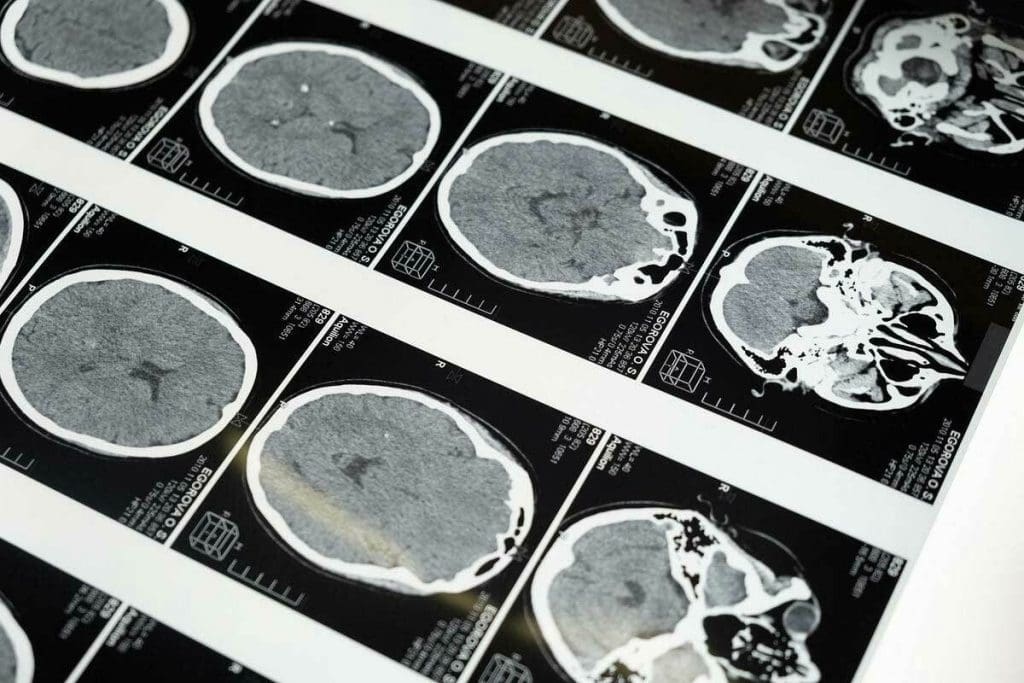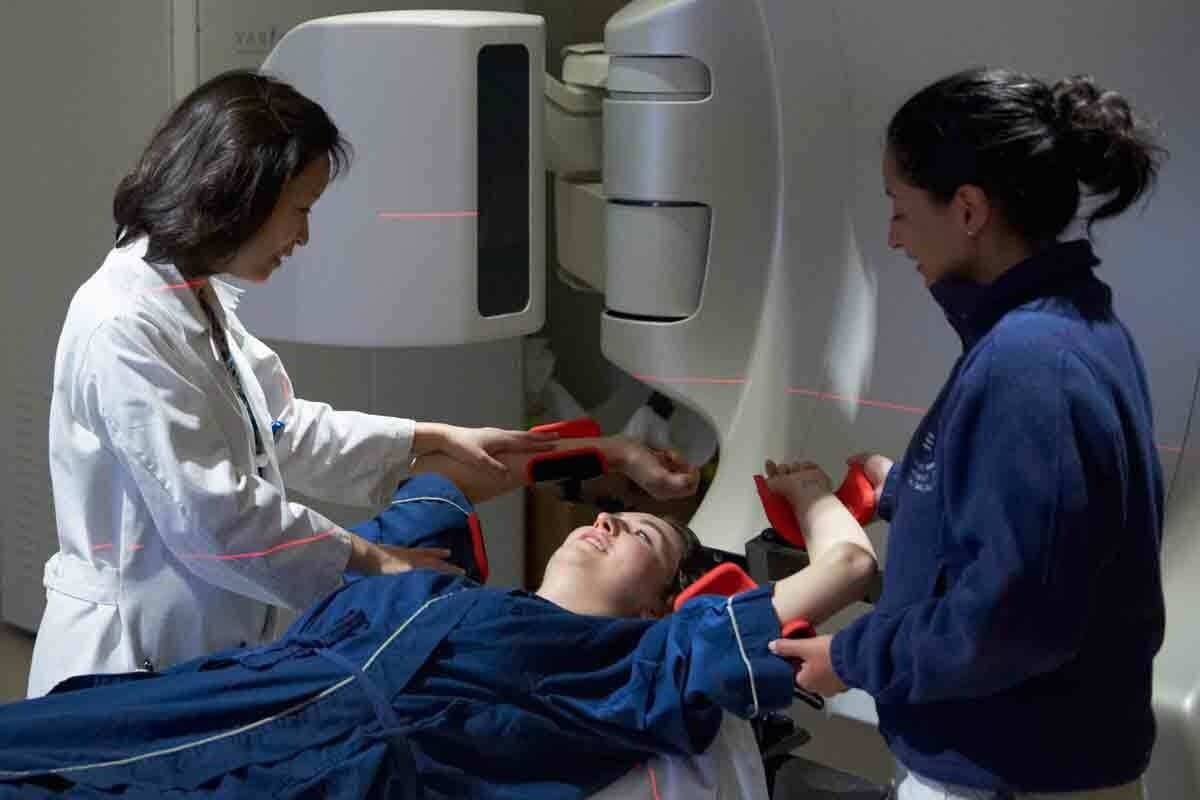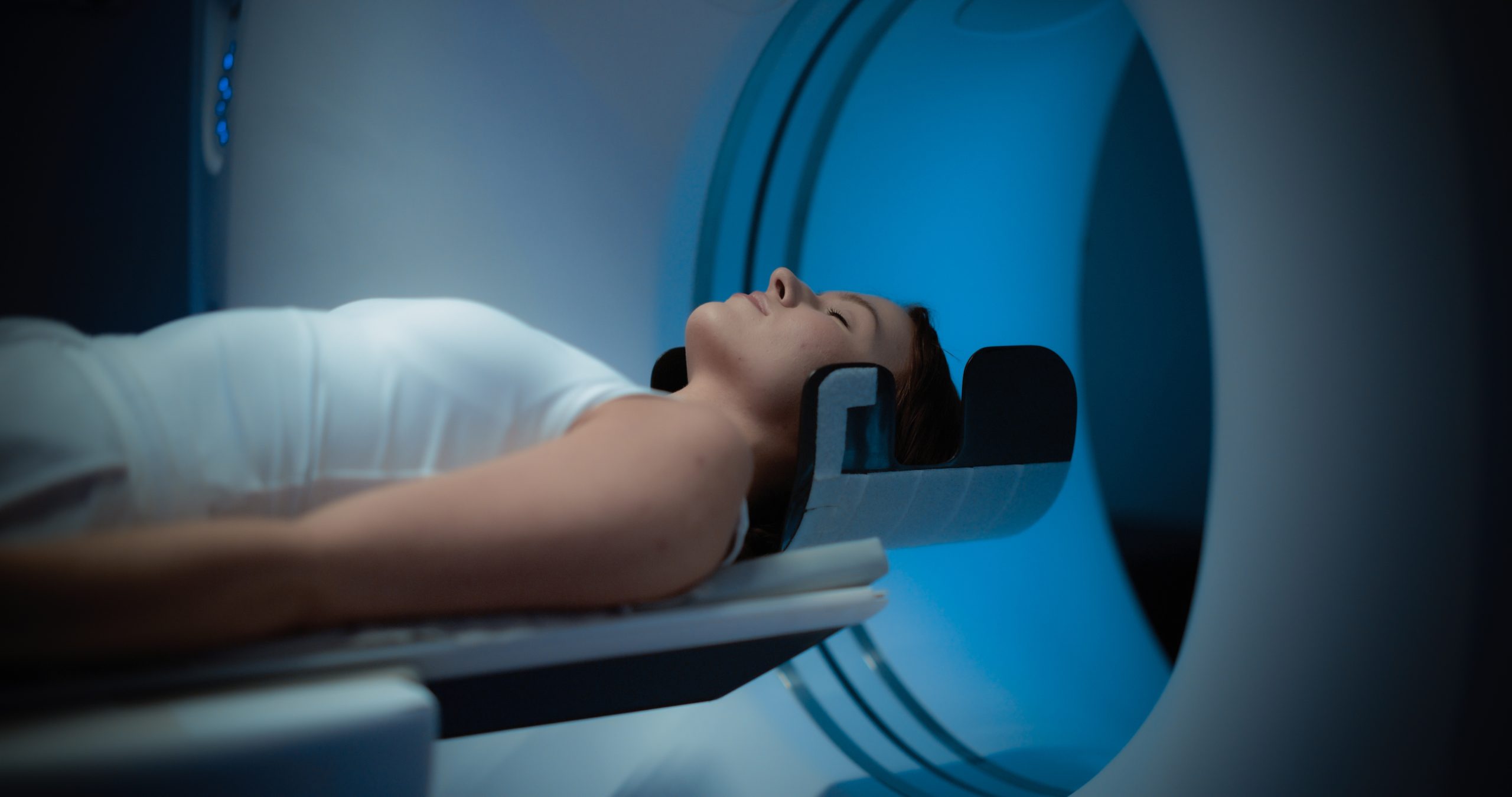Last Updated on November 27, 2025 by Bilal Hasdemir

Doctors use many tests to find a brain tumor. At Liv Hospital, we have the latest technology for quick and accurate results. They check for tumors with MRI and CT scans as a brain tumor test, and sometimes take a biopsy.
Key Takeaways
- Imaging tests like MRI and CT scans are primary methods for diagnosing brain tumors.
- Biopsy procedures involve examining a tissue sample from the tumor.
- Blood tests can help assess overall health and detect certain markers.
- Advanced diagnostic protocols ensure accurate and timely detection.
- Liv Hospital uses state-of-the-art technology for diagnosis.
Understanding Brain Tumors: Types and Warning Signs
It’s important to know about the different types of brain tumors and their signs. Brain tumors can be either primary or metastatic. Each type has its own features and affects treatment differently.
Common Types of Brain Tumors
Primary brain tumors start in the brain. Metastatic tumors spread to the brain from other places. Gliomas, meningiomas, and acoustic neuromas are common primary tumors. Gliomas come from brain tissue and can be mild or severe.
Metastatic tumors are more common. They often come from lung, breast, or skin cancers.
Recognizing Brain Tumor Symptoms
Symptoms of brain tumors vary. They depend on the tumor’s location, size, and type. Common signs include persistent headaches, seizures, and vision or hearing changes.
Some people might feel weakness or numbness in their limbs. Others might have trouble with balance and coordination. Remember, these symptoms can also mean other health issues. So, getting a detailed medical check is key.
When to Seek Medical Evaluation
If you notice any symptoms, see a doctor right away. Early diagnosis is critical for better treatment. At Liv Hospital, we stress the need for quick medical checks for brain tumor signs.
Our team offers full care and support during diagnosis. We’re here to help every step of the way.
The Diagnostic Journey: First Steps When Brain Tumors Are Suspected

When a brain tumor is suspected, the first step is a detailed check to find the cause of symptoms. At Liv Hospital, we know how scary and unsure this time can be. We aim to help our patients through it with kindness and skill.
Initial Neurological Examination
The first step is a detailed check of the brain and nervous system. Our skilled neurologists look at thinking, movement, and reflexes for any signs of a tumor. They check things like:
- Memory and concentration
- Coordination and balance
- Reflexes and muscle strength
- Sensory perception
Medical History Assessment
Looking at a patient’s medical history is key to finding out if they might be at risk. We look at past health, family history, and lifestyle to get clues for diagnosis.
“A detailed medical history is essential in diagnosing brain tumors, as it helps us identify possible risk factors and understand the patient’s overall health.”
Liv Hospital Neurology Team
Preliminary Testing Approaches
After the first check and looking at the medical history, we might do some tests to look closer at the tumor. These could be:
- Blood tests to check overall health and for markers
- Imaging tests (more on these in Section 4)
- Other special tests if needed
At Liv Hospital, our team works together to make sure we get the diagnosis right and plan the best treatment. We know every patient’s journey is different. We’re here to offer care and support every step of the way.
Standard Brain Tumor Test Methods: Imaging Technologies
Imaging technologies are key in finding brain tumors. They help us see and understand tumors better. These tools have changed how we diagnose and treat brain tumors.
Magnetic Resonance Imaging (MRI)
MRI is a main tool for finding brain tumors. It shows the brain’s soft tissues in detail. This helps doctors know the tumor’s size, where it is, and how it affects nearby areas.
MRI is great for showing soft tissues clearly. It uses different images to show the tumor and swelling around it. This helps doctors plan the best treatment.
Computed Tomography (CT) Scans
CT scans are also important for finding brain tumors. They use X-rays to show the brain’s cross-sections. CT scans are fast and good for spotting bleeding or calcification in tumors.
Even though CT scans aren’t as good as MRIs for soft tissues, they help see how tumors affect bones. They can also find calcifications in some tumors.
Positron Emission Tomography (PET) Scans
PET scans show how active brain tumors are. They help tell if a tumor is new or if it’s just a reaction to treatment. They also show how active the tumor is.
PET scans use a radioactive tracer that goes through the blood. The most common tracer is 18F-fluorodeoxyglucose (FDG). It goes to areas with lots of glucose, like in bad tumors.
Functional MRI and Other Specialized Imaging
Functional MRI (fMRI) and other special imaging help a lot. fMRI shows brain function, helping doctors avoid important areas during surgery.
Other advanced tools like diffusion tensor imaging (DTI) and magnetic resonance spectroscopy (MRS) give more info. They help us understand tumors better and plan treatments that fit each person.
Tissue Analysis: Biopsy Procedures for Definitive Diagnosis
Biopsy procedures are key to diagnosing brain tumors. They give vital info about the tumor’s type and grade. At Liv Hospital, our neurosurgeons do these procedures with great care. They make sure patients get the right diagnosis.
Stereotactic Biopsy
A stereotactic biopsy is a small procedure. It uses a special frame and imaging to guide the surgeon. This method is great for tumors in hard-to-reach brain areas.
Open Surgical Biopsy
An open surgical biopsy involves opening the skull to reach the tumor. It’s used for big tumors or when more tissue is needed for diagnosis.
Pathological Examination of Brain Tissue
After getting the tissue sample, it’s sent for pathological examination. This step is key. It involves looking at the tissue under a microscope. It helps find the tumor’s type, grade, and other important details for treatment planning.
Our pathologists and neurosurgeons work together. They make sure the diagnosis is right and complete. This helps create a treatment plan that fits the patient’s needs.
Can Blood Tests Detect Brain Cancer? The Current Reality
Detecting brain cancer through blood tests is complex. Standard blood work is not effective for this purpose. We are often asked if blood tests can detect brain cancer. The answer lies in understanding the limitations and the current blood testing technologies.
Limitations of Traditional Blood Work
Traditional blood tests are not designed to detect brain tumors directly. They assess overall health, detect blood cell count abnormalities, and measure blood chemical levels. While these tests provide valuable health information, they are not used to diagnose brain cancer.
At Liv Hospital, we understand the limitations of traditional blood work for brain tumor detection. Our team keeps up with the latest research and advancements.
Why Most Brain Tumors Don’t Show in Standard Blood Tests
Most brain tumors do not release significant amounts of tumor markers into the bloodstream. This makes them hard to detect through standard blood tests. The blood-brain barrier also limits the release of tumor-related substances into the blood.
Certain brain tumors may not shed cells or DNA into the bloodstream. Or, the amounts may be too small to be detectable with current technology. Researchers are exploring new methods to improve blood test sensitivity for brain tumor detection.
Biomarkers Currently Detectable in Blood
Recent advancements have identified biomarkers associated with brain tumors in blood. These include circulating tumor DNA (ctDNA), microRNAs, and other molecular markers. While these biomarkers show promise, their detection is in the early stages of research.
Accuracy Rates of Current Blood Tests
The accuracy of current blood tests for brain tumor detection varies. It depends on the specific test and biomarkers being investigated. Some studies have reported promising results, with certain tests detecting brain tumors with high sensitivity and specificity.
| Test Type | Sensitivity | Specificity |
| ctDNA Detection | 70% | 85% |
| MicroRNA Analysis | 80% | 90% |
| Protein Biomarker Tests | 60% | 80% |
As research evolves, we can expect better accuracy and reliability in blood tests for brain tumor detection. At Liv Hospital, we are committed to staying at the forefront of these developments. We aim to provide our patients with the best possible care.
The Revolution of Liquid Biopsies for Brain Tumor Detection
Liquid biopsies are changing how we find and track brain tumors. They are non-invasive and very accurate. This new method is making diagnosis and monitoring easier and safer for patients.
How Liquid Biopsies Work
Liquid biopsies look at DNA and biomarkers in the blood. They help find genetic changes linked to brain tumors. This way, doctors can learn about the tumor’s genetics without surgery.
Circulating tumor DNA is DNA from tumors in the blood. It’s key for diagnosing and tracking brain tumors. By studying this DNA, we can spot specific mutations linked to certain tumors.
Detection of Circulating Tumor DNA and mRNA
ctDNA and mRNA in the blood are vital for liquid biopsies. They give insights into the tumor’s genetic makeup. For example, mRNA can show if a tumor is aggressive or resistant to treatment.
Identification of EGFR Mutations and Other Markers
Liquid biopsies are great for finding EGFR mutations and other genetic signs of brain tumors. EGFR mutations are common in aggressive glioblastoma. Finding these mutations helps doctors create better treatment plans.
Current Success Rates: The 70-85% Detection Reality
Research shows liquid biopsies can spot brain tumors 70% to 85% of the time. The success rate varies based on the tumor type, location, and biomarkers. Despite some challenges, these results are encouraging for the future of liquid biopsies in brain cancer.
As research gets better, we expect liquid biopsies to become even more accurate. This could bring new hope to those with brain tumors.
Emerging Blood-Based Brain Tumor Tests: Research and Innovation
The medical world is on the verge of a big change in finding brain tumors. New blood tests are being developed. These tests aim to be more accurate and easier to use. At Liv Hospital, we’re working to use these new tools to help our patients.
Advancements in Genomic Analysis
Scientists are looking into next-generation sequencing for brain tumor detection. This method checks for genetic changes in blood.
Proteomic Analysis for Biomarker Discovery
Proteomic analysis in blood is another area of research. It looks for proteins linked to brain tumors. This could lead to blood tests that can diagnose and track these tumors. Advanced techniques and data analysis are used to find these proteins.
Exosome and Microvesicle Detection
Exosomes and microvesicles carry tumor material in the blood. Finding and studying these in the blood could help diagnose tumors without surgery. Scientists are working to better understand and detect these vesicles.
Future Directions in Non-Invasive Testing
As research moves forward, we’ll see better blood tests for brain tumors. Future tests will likely use many biomarkers and methods. This will make them more accurate. Below is a table showing some new technologies and their uses.
| Technology | Potential Application | Current Status |
| Next-Generation Sequencing | Detection of ctDNA and genetic mutations | Promising early results |
| Proteomic Analysis | Identification of protein biomarkers | Ongoing research |
| Exosome Detection | Analysis of tumor-derived vesicles | Emerging technology |
We’re dedicated to keeping up with these new tests. We want our patients to have the best diagnostic tools. These tests are getting better, and they could greatly help in fighting brain tumors.
Comprehensive Diagnostic Protocols: The Multidisciplinary Approach
At the forefront of brain tumor diagnosis is a detailed protocol. It uses many disciplines for accurate and timely diagnosis. Diagnosing brain tumors needs a mix of medical specialties and advanced tech.
Integrating Multiple Diagnostic Methods
We use many methods to diagnose brain tumors. This includes MRI and CT scans, and tissue analysis through biopsy. These methods help us understand the tumor well, which is key to treatment.
Advanced Imaging Techniques: We use the latest imaging, like functional MRI and PET scans. These help us learn about the tumor and its effect on the brain.
The Role of Specialists in Brain Tumor Diagnosis
A team of specialists is vital for accurate diagnosis. Our team includes neurologists, neurosurgeons, radiologists, and pathologists. They work together for thorough care.
Collaboration is key in our process. Specialists share their knowledge, leading to better diagnosis and treatment.
Liv Hospital’s Approach to Brain Tumor Diagnostics
At Liv Hospital, we focus on patient care in diagnostics. Our protocols are designed to meet each patient’s needs. This ensures personalized care.
Patient-Centered Diagnostic Pathways
Our diagnostic pathways are flexible and patient-focused. We know a brain tumor diagnosis can be tough. We aim to guide and support patients through it.
By using many diagnostic methods and our team’s expertise, we aim for accurate diagnoses. This helps us create effective treatment plans for each patient.
Conclusion: The Future of Brain Tumor Diagnostics
The future of diagnosing brain tumors looks bright. Ongoing research is leading to better and less painful ways to find and treat tumors. New imaging, biopsy, and blood tests are making a big difference.
At Liv Hospital, we’re all about top-notch care. We use the newest methods to help our patients. Our team works together to give patients the best care from start to finish.
We’re excited for what’s coming next. New tools and technologies will help us find and treat tumors even better. Things like liquid biopsies and next-generation sequencing will be key in the future.
FAQ
How do doctors test for brain tumors?
Doctors use MRI and CT scans to see brain tumors. They also do biopsies and check the brain with exams.
Can a brain tumor show up in blood work?
Blood tests usually don’t find brain tumors. But, new tests like liquid biopsies might help find them without surgery.
What are the common symptoms of a brain tumor?
Symptoms vary by tumor location and size. Common signs include headaches, seizures, and changes in thinking or movement.
How is a brain tumor diagnosed?
Doctors use many tests to find and identify brain tumors. This includes scans, biopsies, and brain exams.
Can blood tests detect brain cancer?
Blood tests can’t usually find brain cancer. But scientists are working on new tests that might help in the future.
What is a liquid biopsy?
A liquid biopsy is a blood test that looks for cancer cells. It’s a way to find tumors without surgery.
How accurate are blood tests for brain tumors?
Blood tests aren’t good at finding brain tumors yet. But new tests like liquid biopsies might work better, with accuracy up to 85%.
What is the role of imaging technologies in brain tumor diagnosis?
Imaging, like MRI and CT scans, is key. They show where and what the tumor is, helping doctors plan treatment.
How do doctors determine the type and grade of a brain tumor?
Doctors look at tissue samples from biopsies. This tells them the tumor’s type and how aggressive it is.
What is the importance of a multidisciplinary approach in brain tumor diagnosis?
A team of specialists ensures accurate diagnosis and care. This team approach is vital for brain tumor patients.
How to check for a brain tumor?
To check for a brain tumor, doctors use exams, scans, and biopsies. These tests are done in a medical setting.
Does brain cancer show up in blood work?
Blood tests usually don’t find brain cancer. But scientists are working on better tests that might be able to.
Would a brain tumor show in a blood test?
Right now, blood tests can’t find brain tumors. But new tests might be able to in the future.
Can a blood test show a brain tumor?
Blood tests can’t diagnose brain tumors yet. But research into new tests might offer hope.
How to detect brain cancer?
To find brain cancer, doctors use scans, biopsies, and exams. These tests are done in a medical setting.
How to test for brain cancer?
Testing for brain cancer involves many steps. Doctors use scans, biopsies, and exams to find and identify tumors.
References
- Kaifi, R., Faruquee, C., & Lu, C. (2023). A review of recent advances in brain tumor diagnosis and treatment. Frontiers in Oncology, 13, 10527911. https://pmc.ncbi.nlm.nih.gov/articles/PMC10527911/






